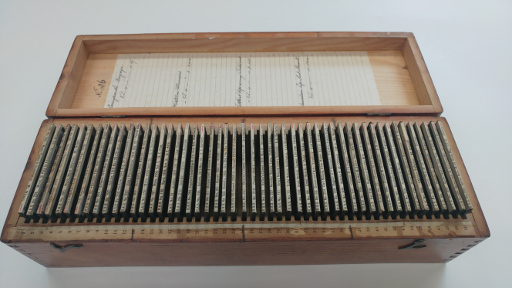 We have a wooden box containing fifty Royal Astronomical Society Black and White lantern slides in our Science and Medicine collection.
We have a wooden box containing fifty Royal Astronomical Society Black and White lantern slides in our Science and Medicine collection.
These slides feature Victorian and Edwardian images of the sky and its objects, including eclipses, the surface of the moon, galaxies and other phenomena.
The lantern slide originated from 17th century optical viewing devices which came to be known as “magic lanterns.” The earliest slides for magic lanterns were hand-painted images on glass, projected by itinerant showmen to amuse their audiences. In 1849, about ten years after the invention of photography, lantern slides began to be produced photographically. Rapid improvements in photographic reproduction methods and more effective projection caused magic lantern slides to grow in popularity.
From the 1850s, a growing number of slide manufacturers retained stock collections of negatives from which lantern slides could be produced, assembled these into thematic boxed sets, and sold them to universities, societies and individuals.
As new photographic films emerged in the 1930s and 1940s, magic lantern shows became increasingly rare.